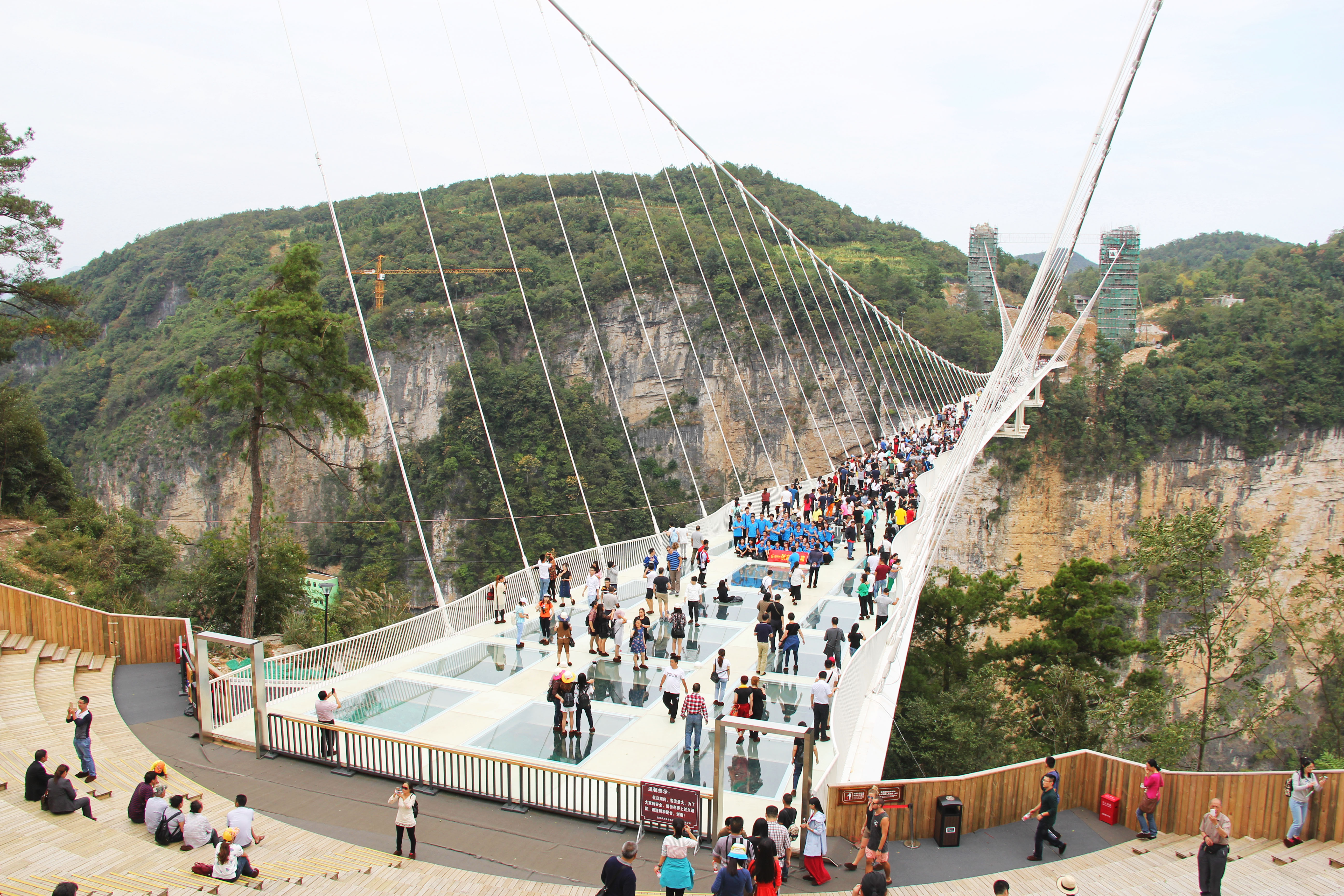
Why Was the Zhangjiajie Glass Bridge Built?
Introduction
The Zhangjiajie Glass Bridge, a marvel of modern engineering, stretches across the breathtaking landscapes of Zhangjiajie National Forest Park in Hunan, China. This skywalk bridge, renowned for its glass bottom and transparent design, offers visitors an unparalleled experience of walking on air amidst towering sandstone pillars. But why was this architectural wonder built in the first place?
Reasons for Construction
1. Tourism Boost
- Increased Visitor Numbers: The primary motivation behind the construction of the Zhangjiajie Glass Bridge was to attract a larger number of tourists to the region. The bridge's unique and thrilling design was envisioned as a major crowd-puller.
- Economic Growth: The influx of tourists was expected to boost the local economy significantly. Increased tourism translates into higher revenues from entrance fees, accommodation, transportation, souvenirs, and other tourist-related services.
2. Architectural Showcase
- Engineering Prowess: The bridge stands as a testament to China's growing capabilities in architectural and engineering fields. Its design and construction involved overcoming significant technical challenges, showcasing Chinese innovation on a global stage.
- Iconic Landmark: The creators of the bridge aimed to create an iconic landmark that would become synonymous with Zhangjiajie and China itself. The bridge's distinctive appearance has indeed made it a recognizable symbol around the world.
3. Enhanced Visitor Experience
- Unique Perspective: The glass-bottomed design of the bridge provides visitors with a unique and breathtaking perspective of the surrounding landscape. The illusion of walking on air amidst towering sandstone formations creates an unforgettable experience.
- Thrill and Adventure: The bridge offers a sense of thrill and adventure, attracting adrenaline junkies and those seeking unique experiences. The transparent walkway and the dizzying heights contribute to the exhilarating nature of the attraction.
Bridge Specifications
To further understand the scale and significance of the Zhangjiajie Glass Bridge, let's take a look at its impressive specifications:
| Feature | Description | |---|---| | Length: | 430 meters (1,410 feet) | | Width: | 6 meters (20 feet) | | Height: | Approximately 300 meters (984 feet) above the ground | | Material: | Glass panels supported by steel beams | | Capacity: | 800 people at a time |
Conclusion
The Zhangjiajie Glass Bridge stands as a testament to human ingenuity and the desire to create awe-inspiring experiences. While its primary purpose was to attract tourists and boost the local economy, the bridge has also become an architectural marvel and a symbol of China's engineering prowess. Whether driven by a thirst for adventure, a fascination with architecture, or simply a desire to witness something truly unique, visitors to the Zhangjiajie Glass Bridge are certain to leave with unforgettable memories.
FAQs
1. How safe is the Zhangjiajie Glass Bridge?
The bridge has undergone rigorous safety tests and is designed to withstand strong winds and earthquakes. The glass panels are made of multiple layers of tempered glass, making them extremely durable.
2. Is it scary to walk on the glass bridge?
While the transparent walkway can be initially daunting for some, the bridge is designed to be safe and secure. The stunning views and the thrill of the experience often overshadow any fear.
3. Are there any restrictions on what I can bring onto the bridge?
Yes, for safety reasons, items such as high heels, selfie sticks, and large bags are not permitted on the bridge.